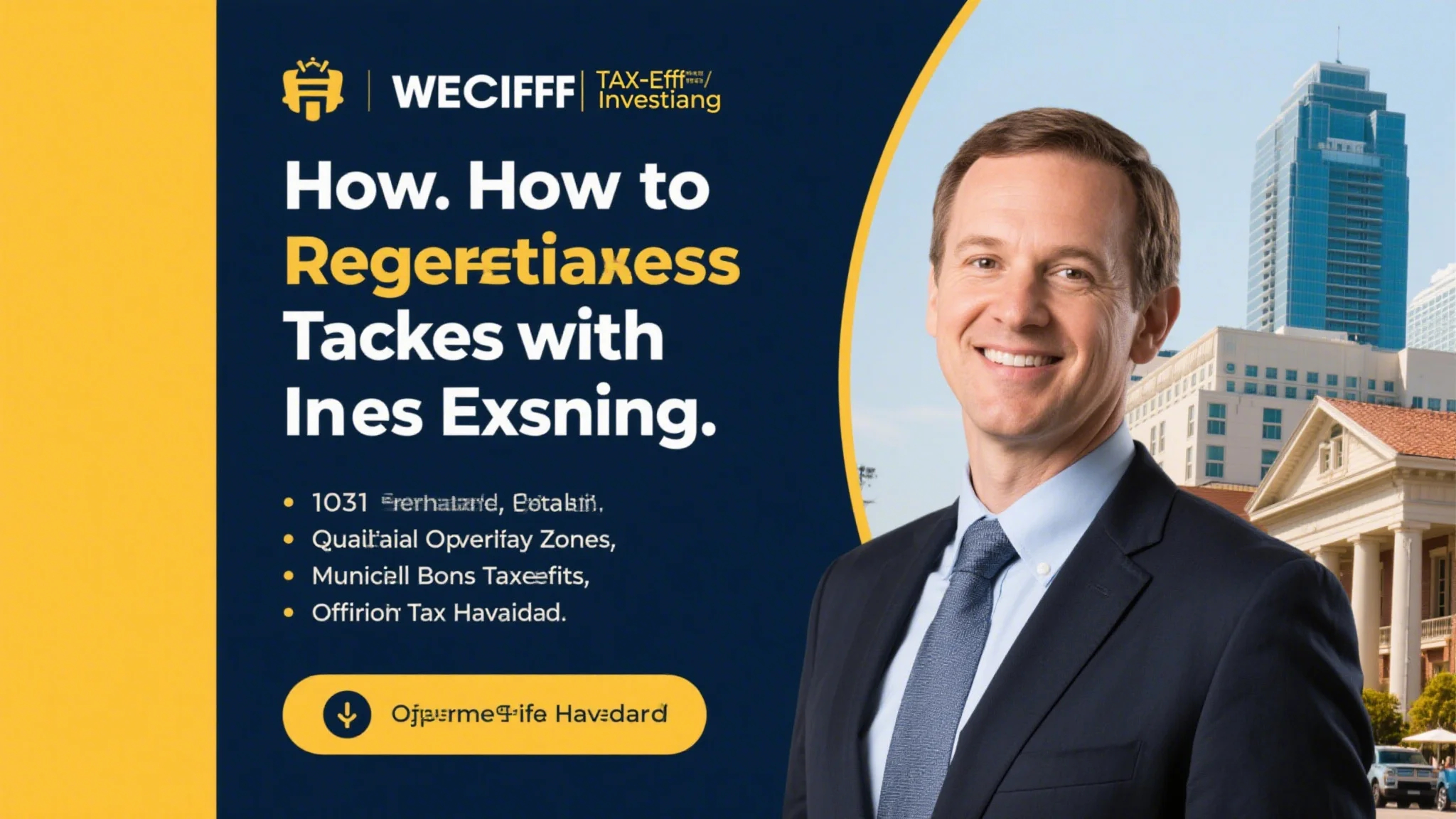
How to Reduce Taxes with Tax-Efficient Investing
Fundamentals of Tax-Efficient Investing
Tax-efficient investing begins with understanding how different assets are taxed. Long-term capital gains and qualified dividends enjoy lower tax rates (0%, 15%, or 20%) compared to ordinary income. Placing high-growth investments in Roth accounts and income-producing assets in traditional retirement accounts can significantly reduce lifetime tax burdens. Taxable accounts should prioritize stocks held long-term and municipal bonds, while actively traded securities belong in tax-advantaged accounts.
Asset location strategy goes beyond simple asset allocation by considering the tax characteristics of each investment. Index funds and ETFs typically generate fewer taxable distributions than actively managed funds. Tax-loss harvesting systematically realizes losses to offset gains while maintaining market exposure. This strategy works particularly well in volatile markets, allowing investors to “bank” losses for future use against capital gains.
Real Estate Tax Deferral Strategies
The 1031 exchange real estate provision allows deferring capital gains taxes when selling investment property and purchasing “like-kind” replacement property. To qualify, investors must identify replacement property within 45 days and complete the exchange within 180 days. The deferred gain reduces the basis in the new property, potentially creating a larger taxable gain when ultimately sold without another exchange.
Reverse exchanges permit acquiring replacement property before relinquishing the original property, providing more flexibility. Delaware Statutory Trusts (DSTs) allow fractional ownership in institutional-quality properties that qualify for 1031 exchanges. These sophisticated strategies require careful planning and professional guidance to ensure strict IRS compliance and maximize tax deferral benefits.

Opportunity Zone Investments
Qualified opportunity zones offer three potential tax benefits for capital gains reinvested within 180 days: deferral of the original gain until 2026, reduction of the deferred gain by up to 15%, and permanent exclusion of new investment gains held at least 10 years. These economically distressed communities provide tax incentives while encouraging economic development.
Opportunity zone funds pool investor capital to develop properties or businesses in designated zones. The 10-year hold requirement for full tax benefits creates illiquidity considerations. Proper due diligence is essential, as investment performance varies widely by location and operator. The program’s scheduled expiration in 2026 adds urgency for those considering this strategy.
Municipal Bond Advantages
The municipal bonds tax benefits include federal tax-exempt interest, with many states also exempting interest from bonds issued within their borders. These “double tax-free” bonds are particularly attractive for high-income investors in high-tax states. Yield comparisons should use tax-equivalent yield calculations to properly evaluate after-tax returns against taxable alternatives.
Build America Bonds (BARs) offer taxable municipal bonds with federal subsidies, potentially providing higher after-tax yields for some investors. Municipal bond funds provide diversification but may generate capital gains distributions. Direct ownership of individual bonds eliminates this risk while allowing precise maturity targeting. Credit quality analysis remains essential, as not all municipal bonds carry equal default risk.
International Tax Planning
Understanding offshore tax havens explained requires distinguishing between legal tax avoidance and illegal evasion. While outright hiding assets offshore is prohibited, legitimate structures like foreign trusts and international business corporations can provide tax deferral when properly reported. The Foreign Account Tax Compliance Act (FATCA) requires disclosure of foreign financial accounts exceeding $50,000.
Puerto Rico’s Act 60 offers exceptional tax incentives for bona fide residents, including 4% corporate tax rates and 0% capital gains on island-sourced income. Captive insurance companies allow businesses to deduct premiums while building reserves in favorable jurisdictions. These international strategies demand expert advice to avoid running afoul of anti-avoidance rules like the controlled foreign corporation (CFC) regulations.
Retirement Account Strategies
Maximizing contributions to tax-advantaged retirement accounts provides immediate deductions or tax-free growth. The “mega backdoor” Roth strategy allows after-tax 401(k) contributions (up to $66,000 total in 2023) that can be converted to Roth funds. Health Savings Accounts (HSAs) offer triple tax benefits when paired with high-deductible health plans.
Roth conversions during low-income years can fill lower tax brackets with taxable income now to avoid higher rates later. The pro-rata rule complicates conversions for those with existing traditional IRA balances, making rollovers to workplace plans potentially advantageous. Required Minimum Distributions (RMDs) now begin at age 73, requiring careful planning to minimize tax impacts.
Estate Planning Integration
Tax-efficient investing extends beyond lifetime planning to wealth transfer strategies. The current $12.92 million federal estate tax exemption (2023) presents historic wealth transfer opportunities. Spousal lifetime access trusts (SLATs) allow using exemptions while maintaining some indirect benefit. Grantor retained annuity trusts (GRATs) work well in low-interest-rate environments.
Family limited partnerships (FLPs) facilitate discounted transfers of business interests to heirs. Charitable remainder trusts (CRTs) provide income streams with eventual charity benefits. These sophisticated tools require coordination between legal, tax, and investment professionals to implement effectively while complying with evolving tax laws.
Year-Round Tax Management
Effective tax planning requires ongoing attention rather than year-end scrambling. Quarterly estimated tax payments should account for all income sources. Tax-loss harvesting opportunities emerge throughout the year, while Roth conversions often work best during market downturns.
Regular reviews with tax professionals ensure strategies remain optimized as laws and personal circumstances evolve. Documenting tax basis and holding periods simplifies reporting. Maintaining organized records supports tax positions while minimizing preparation costs. A proactive approach to tax-efficient investing can preserve substantial wealth over time.


